Nutrition Tools for Raw Feeding Dogs
Not all food is created and raised equally and because of that, not all cuts of meats, organs, or vegetables, etc. provide the same type or amounts of nutrition.
Below are clickable and non-clickable nutrition tools to help you with finding food values.
*This list is continuously being added to as more databases are verified for accuracy.
All websites that are in a foreign language to you can be easily translated either by a language conversion tab offered on the website or by right clicking your mouse and selecting “translate to (it will list your default language setting here).”
The USDA FoodData Central Database has thousands of nutritional profiles of foods to choose from. You can enter the food you want information on and it will provide the full nutrient information that has been analyzed. If you select “Full Report (all nutrients)” it will give you any refuse content as well. For example the refuse listed for raw, dressed quail is 10% bone. The refuse description for raw beef heart is 29% fat, veins, and connective tissue. Protein, fat, carbs, water, kcals, minerals, vitamins, fatty acids, and more can also be found. Example: Raw beef back ribs contain 19.11 g of protein, 61.70 g of water, 1.75 g of B-12, 64% refuse to include, bone, connective tissue, and fat. *The examples provided here do not contain full nutrition data.
The Canadian Nutrient File (Food Database by Health Canada is a comprehensive database that reports nutrients in foods. The database can be used to find values for nutrients such as vitamins, minerals, protein, energy, fat, etc. Example: Raw turkey neck, meat only will give you the full nutrient information including the refuse % and description. Raw turkey neck with meat only in this database is 42% bone refuse. It contains 29.72 g of protein, 10.87 g of fat, 43 mg of calcium, 288 mg of phosphorus; 0.009 g of 22:6n-3 (DHA). *The examples provided here do not contain full nutrition data.
Ciqual, the French Food Composition Table offers nutrient information that many other databases do not. You can type in the name of the raw food you’re seeking nutrition data for and it will default to a comprehensive report if it is available, otherwise it will default to a basic report. You can use English to conduct your search.
The New Zealand Food Composition Database is also a comprehensive database and it is also one of the more user-friendly websites. Their database has nutrient information for many foods not commonly found in many others.
Norwegian National Institute of Nutrition and Seafood Research This site has a wide array of nutrient information as well as contaminant level data. Fish & seafood not easily found in most common food composite databases can be found here.
Czech Food Composition Database is managed and updated by the Czech Center for Food Composition Database within the Institute of Agricultural Economics and Information. The current version of the database that this link is for provides nutrient information for 750 foods. You can opt to see the full nutrient details they offer about a food by selecting “Full Record.” *Note: This database is limited in regards to what nutrients they provide information for. There are many foods listed that do not have nutrient information listed that can be found in other food databases.
Comprehension of Nutrition Values (not a link or a book, a true understanding of CNV is needed) You need to learn and understand the appropriate values of the different foods you want to feed your dog so you can ensure they work together to bring the nutritional value you are striving for. This will take some time and effort but in order to provide your dog with optimal nutrition, you’ll need this crucial knowledge.
If you need additional nutrition tools for raw feeding dogs you can visit any of the calculators on the menu. The best way to go about feeding your dog for its daily needs is via the caloric methodology. You can learn about by clicking or pressing here.
